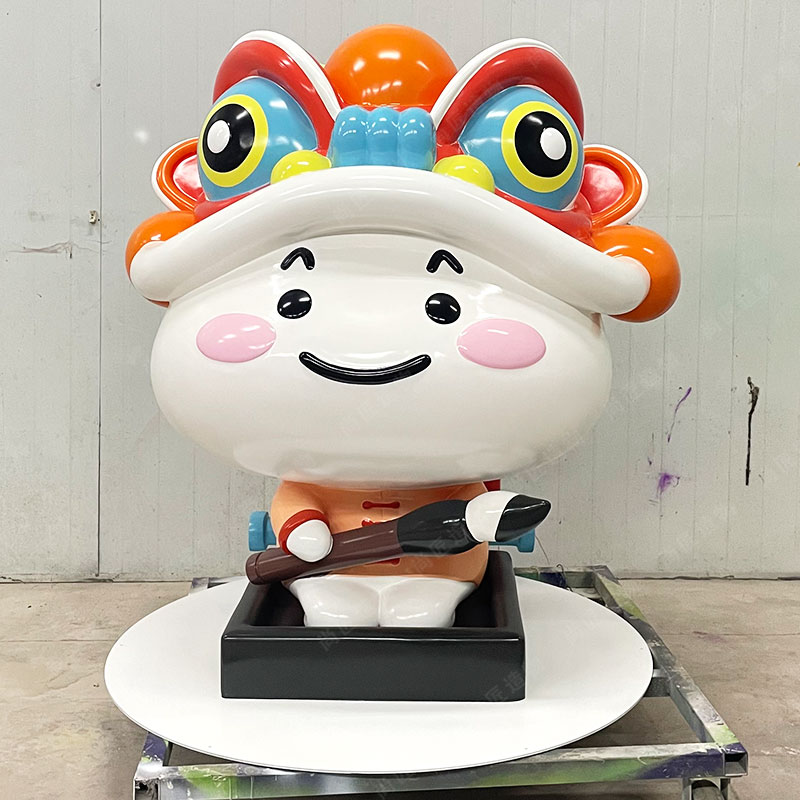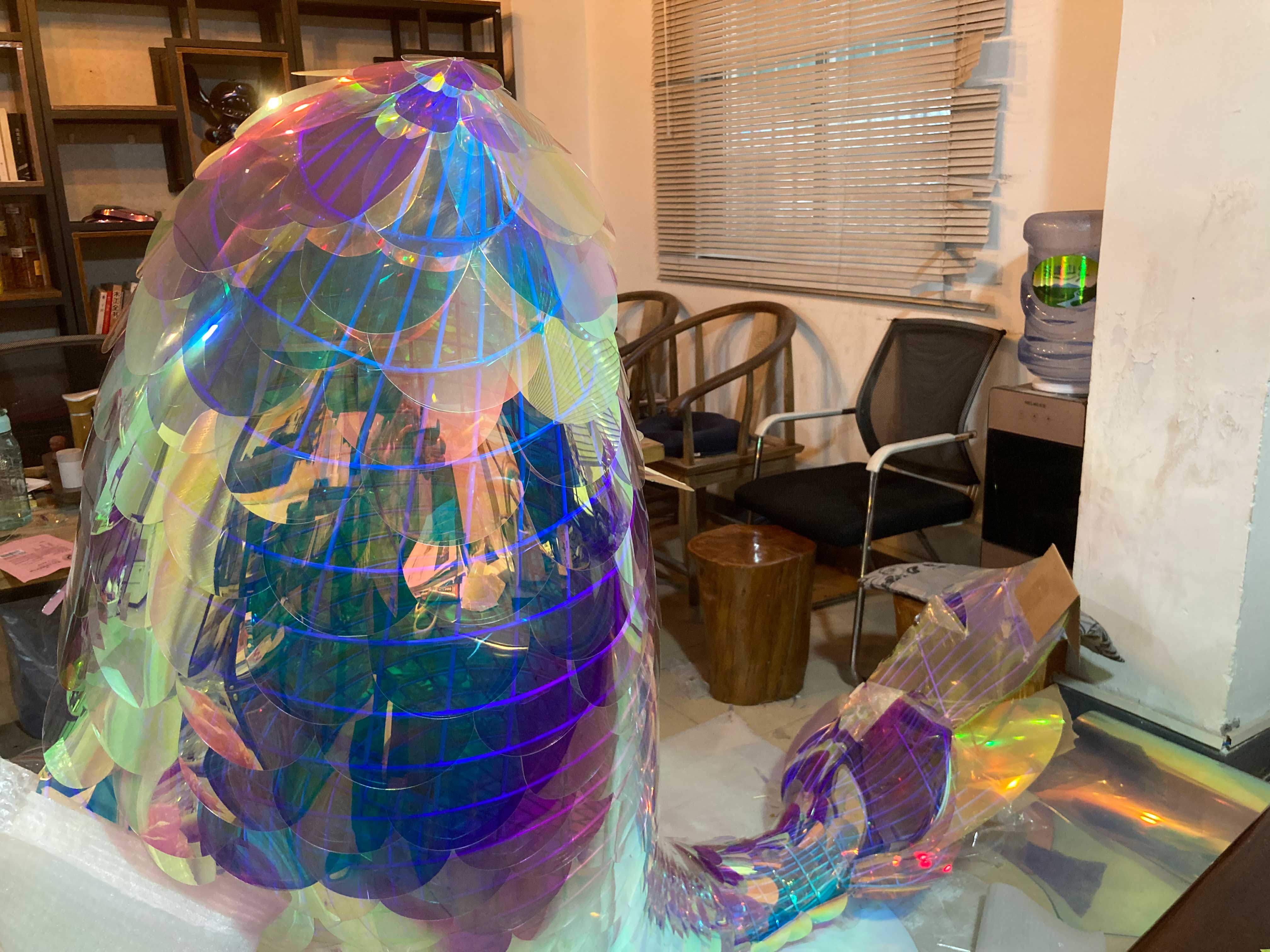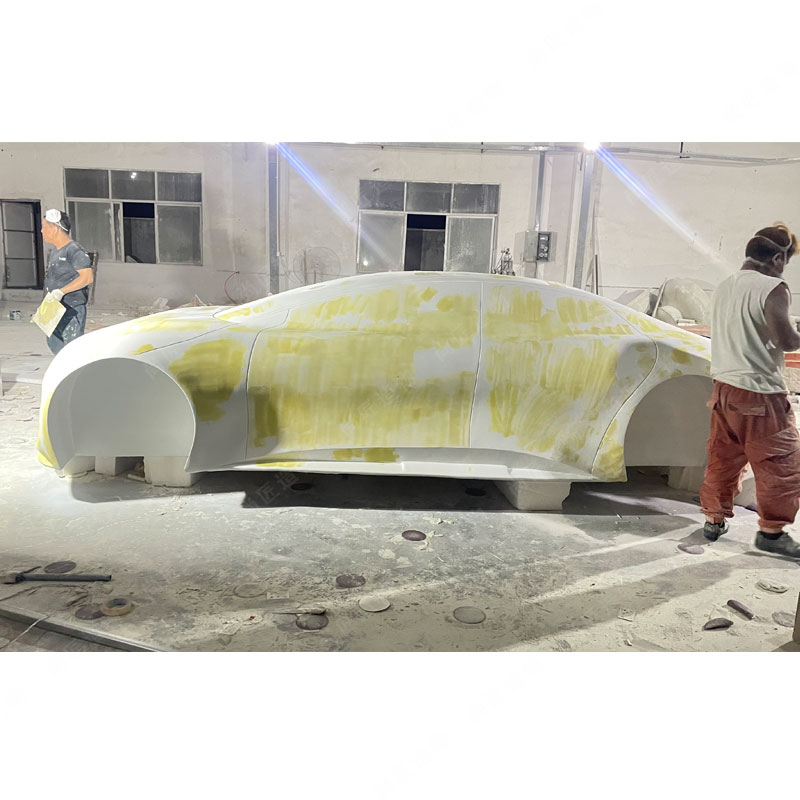Key Takeaways
Fiberglass sculptures designed for outdoor environments combine durability with artistic versatility, making them ideal for diverse settings. These installations are engineered to endure extreme weather conditions, including UV exposure, heavy rain, and temperature fluctuations, while retaining their structural integrity and visual appeal. Their lightweight nature simplifies installation in patios or elevated spaces without compromising stability, and customizable designs allow for seamless integration into gardens, commercial properties, or public art projects.
| Feature | Benefit |
|---|---|
| UV-Resistant Coatings | Prevents color fading in direct sunlight |
| Reinforced Base | Enhances stability in windy conditions |
| Modular Construction | Allows for easy transport and assembly |
| Non-Corrosive Material | Resists rust and degradation over time |
Transitioning between functional and aesthetic considerations, fiberglass sculptures offer a balance of practicality and creativity. For instance, textured finishes mimic traditional materials like stone or metal while reducing maintenance needs. Public spaces benefit from large-scale installations that withstand high foot traffic, whereas residential gardens gain focal points through intricate, nature-inspired designs. By prioritizing weather-resistant materials and adaptable forms, these sculptures maintain their vibrancy for decades, aligning with both personal and institutional artistic goals.
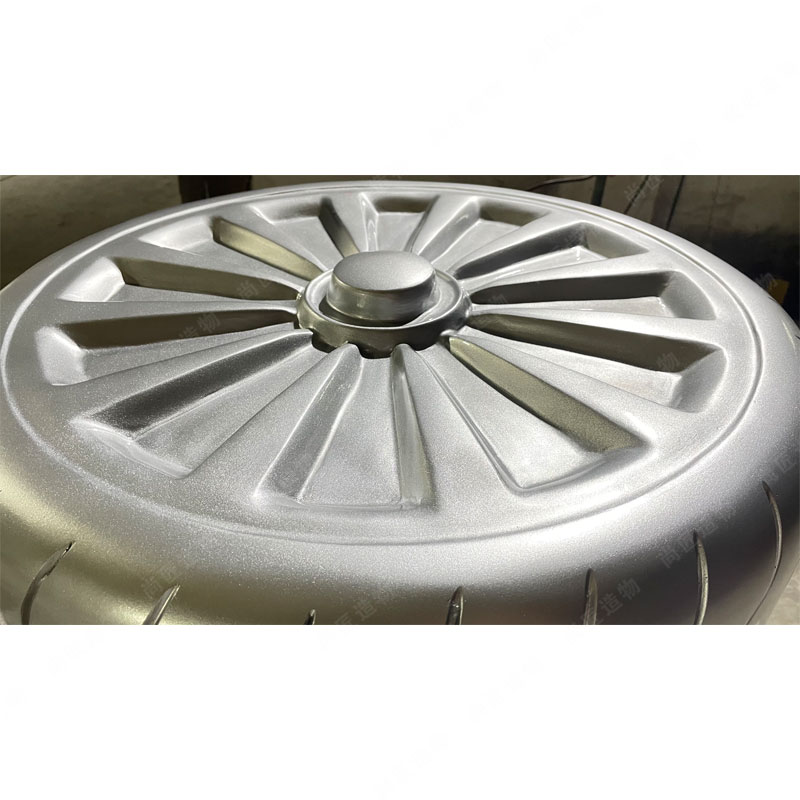
Durable Outdoor Fiberglass Art Designs
Fiberglass sculptures designed for outdoor use combine artistic vision with engineering precision to create pieces that endure challenging environments. Unlike traditional materials like stone or wood, fiberglass-reinforced polymer (https://en.artmovr.com/) crafted from fiberglass retain their playful aesthetics despite seasonal weather shifts. Additionally, the non-porous surface discourages mold growth, reducing maintenance needs. This durability makes fiberglass ideal for public art installations, where longevity and minimal upkeep are critical. By blending artistic expression with functional resilience, these sculptures transform outdoor spaces into dynamic, enduring showcases of creativity.
Weather-Resistant Fiberglass Garden Sculptures
Fiberglass garden sculptures excel in outdoor environments due to their inherent resistance to weathering. Unlike traditional materials like wood or stone, fiberglass does not warp, crack, or corrode when exposed to rain, snow, or prolonged sunlight. This durability stems from its composite structure, which combines resin with glass fibers to create a non-porous surface that repels moisture and resists UV degradation.
"Fiberglass allows artists to maintain intricate details without sacrificing structural integrity, even in extreme climates," notes landscape designer Clara Merton.
For gardens, this means sculptures retain their vibrancy for years, requiring minimal upkeep. A light rinse with water or mild soap is typically sufficient to remove dirt or debris. To maximize longevity, consider positioning sculptures away from direct exposure to harsh midday sun or heavy foot traffic areas.
The material’s adaptability also supports custom designs—from abstract forms to lifelike botanical motifs—ensuring seamless integration into diverse garden themes. For example, fiberglass sculptures can mimic the texture of aged metal or weathered stone while remaining lightweight enough for easy repositioning. This combination of practicality and artistic flexibility makes fiberglass a preferred choice for both residential and commercial outdoor spaces.
Lightweight Custom Sculptures for Patios
Patio spaces benefit significantly from lightweight custom sculptures made of fiberglass, which combine practicality with artistic appeal. Unlike heavier materials such as stone or concrete, fiberglass sculptures are easy to reposition, allowing homeowners to refresh their outdoor layouts without professional assistance. This flexibility is particularly valuable for seasonal displays or accommodating gatherings.
The material’s durability ensures these sculptures withstand temperature fluctuations, humidity, and UV exposure, maintaining their structural integrity and color vibrancy for years. For example, a delicate floral design or abstract geometric piece can endure rainstorms and intense sunlight without cracking or fading. Designers often incorporate textured finishes or metallic coatings to complement patio themes, from modern minimalist setups to rustic garden aesthetics.
While fiberglass excels in adaptability, some installations may pair well with stainless steel sculpture elements for contrast in material textures. However, fiberglass remains the preferred choice for patios due to its unmatched weight-to-strength ratio. Custom sizing options further enable seamless integration with existing furniture or landscaping features, ensuring each piece enhances the space without overwhelming it. This balance of functionality and creativity makes fiberglass ideal for transforming patios into personalized outdoor galleries.

Enhancing Public Spaces With Fiberglass Art
Fiberglass sculptures have become a transformative element in urban design, offering municipalities and institutions a practical yet visually striking way to revitalize public areas. Unlike traditional materials like stone or bronze, fiberglass’s lightweight nature simplifies transportation and installation, reducing logistical challenges for large-scale projects. This adaptability allows artists to create bold, oversized pieces that serve as focal points in parks, plazas, or transit hubs. For example, IP character sculpture installations can reflect local culture or historical narratives, fostering community identity.
The material’s resistance to UV rays, moisture, and temperature fluctuations ensures these artworks maintain their structural integrity and color vibrancy for decades, even in high-traffic environments. Cities increasingly use fiberglass sculptures to address functional needs—such as wayfinding markers or seating integrations—while adding aesthetic value. Additionally, their modular design enables easy relocation or reconfiguration during urban renewal projects. From playful mascots in recreational zones to abstract forms in corporate campuses, fiberglass art bridges utility and creativity, proving that public spaces can be both durable and inspirational.
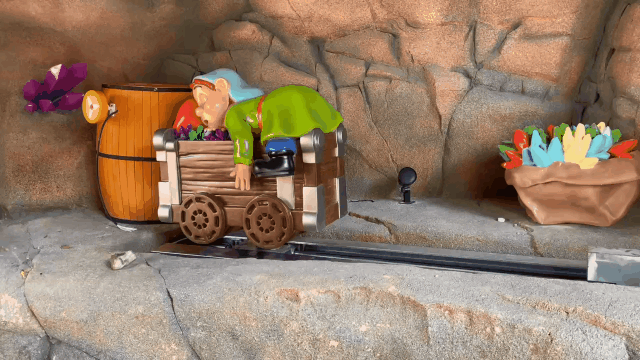
Creative Expression in Outdoor Sculpture Design
Fiberglass has revolutionized how artists and designers approach outdoor installations, offering unmatched flexibility to translate abstract ideas into tangible forms. Unlike traditional materials such as stone or bronze, fiberglass allows for intricate detailing and dynamic shapes while maintaining structural integrity. This adaptability enables creators to explore themes ranging from abstract geometric patterns to lifelike realistic sculptures, blending artistic vision with functional durability.
The lightweight nature of fiberglass further supports experimental designs, making it feasible to install large-scale pieces in gardens, parks, or urban plazas without compromising stability. Artists often leverage its weather-resistant properties to incorporate vibrant colors or textured finishes that endure UV exposure, rain, and temperature fluctuations. For instance, a sculpture inspired by natural elements might feature flowing organic curves combined with a matte coating to mimic weathered stone, creating visual harmony with its surroundings.
By merging technical precision with imaginative concepts, custom fiberglass sculptures transform outdoor spaces into immersive environments. Whether serving as a focal point in a private garden or an interactive landmark in a public area, these works invite viewers to engage with art in everyday settings, fostering a deeper connection between creativity and the natural world.
Long-Lasting Fiberglass Installations Outdoors
Fiberglass sculptures designed for outdoor environments combine artistic vision with advanced material science to ensure enduring performance. Unlike traditional materials like stone or wood, fiberglass resists cracking, warping, and corrosion, even when exposed to prolonged sunlight, rain, or temperature fluctuations. Its structural integrity is reinforced through layered resin coatings and UV inhibitors, which prevent fading and degradation over decades. This durability makes fiberglass ideal for permanent installations in gardens, parks, or commercial landscapes, where minimal maintenance is a priority.
The adaptability of fiberglass allows for intricate designs that retain their sharp details despite harsh weather. For example, kinetic sculptures crafted from fiberglass can withstand wind and moisture while maintaining dynamic movement. Customizable finishes—from metallic patinas to textured stone effects—ensure these installations blend seamlessly with their surroundings or stand out as bold focal points. Additionally, the material’s lightweight nature simplifies transportation and installation compared to heavier alternatives, reducing labor costs without compromising stability. By balancing resilience with artistic flexibility, fiberglass transforms outdoor spaces into enduring showcases of creativity.
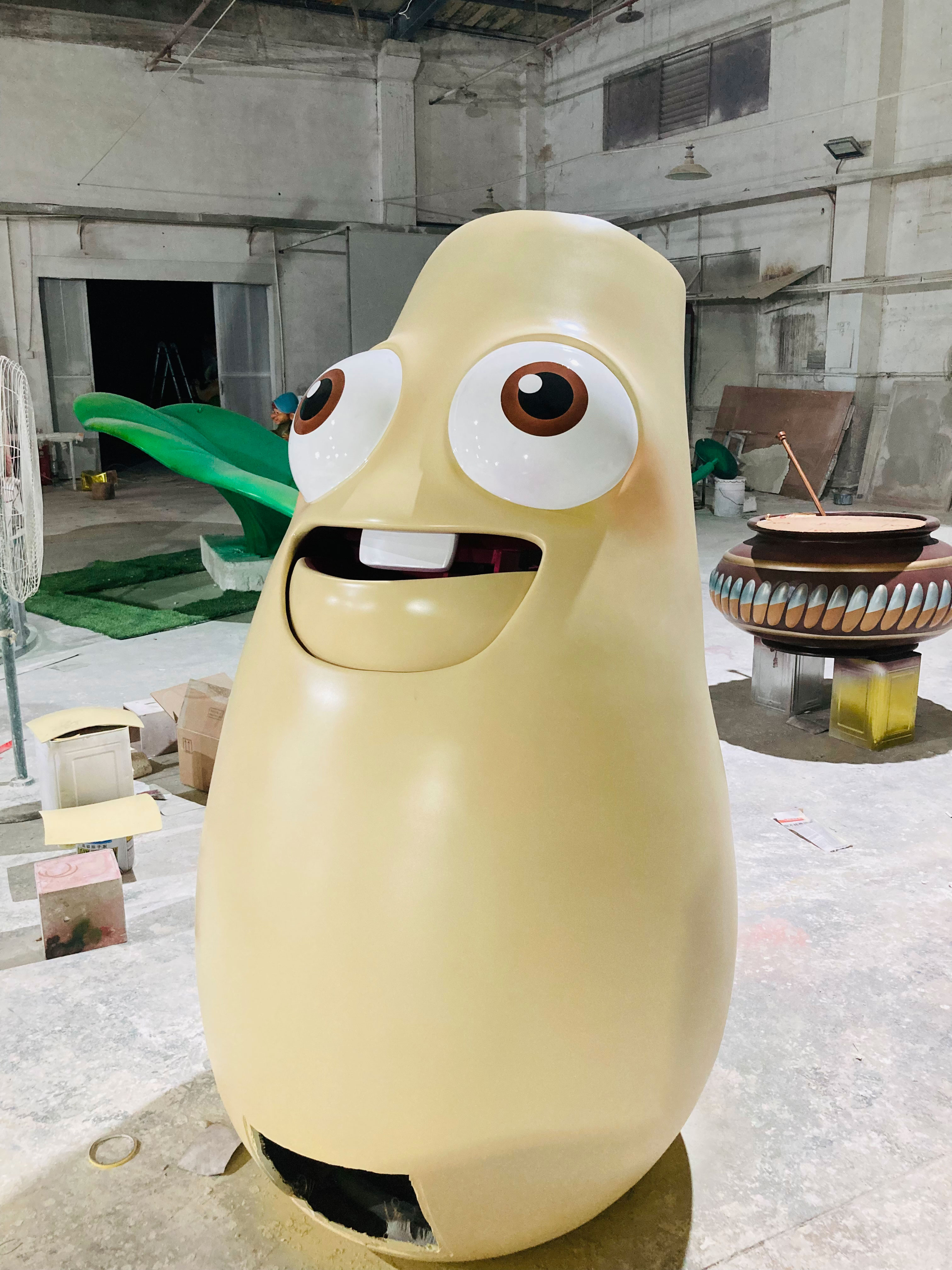
Versatile Applications of Custom Sculptures
Fiberglass sculptures offer unmatched adaptability for both private and commercial outdoor spaces. Their lightweight construction allows effortless relocation, making them ideal for seasonal displays or rotating art installations. In residential settings, these sculptures serve as garden focal points, accentuating flower beds or water features, while smaller designs add whimsy to patio tables or entryways. Commercial applications extend to hotel courtyards, corporate campuses, and retail plazas, where large-scale installations reinforce brand identity or create Instagram-worthy landmarks. Architects increasingly incorporate custom fiberglass elements into public parks and urban renewal projects, combining aesthetic appeal with functional features like bench integrations or wayfinding markers. Unlike traditional materials, fiberglass maintains structural integrity when molded into intricate shapes—from abstract modern forms to hyper-realistic animal replicas—ensuring design visions survive decades of sun, rain, and temperature fluctuations. This versatility bridges artistic ambition with practical durability, meeting diverse spatial requirements without compromising visual impact.
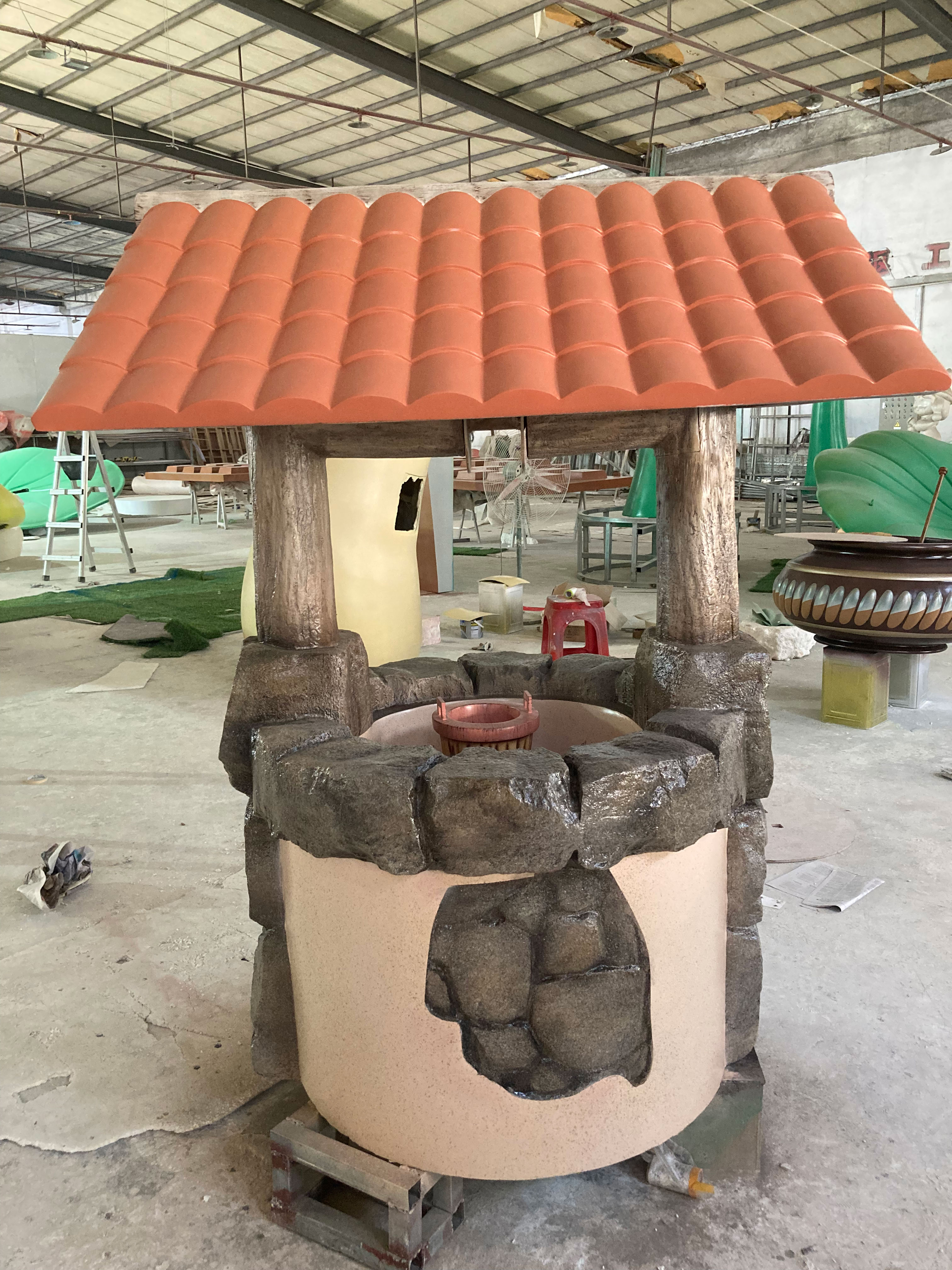
Artistic Fiberglass Installations for Gardens
Fiberglass sculptures offer a unique blend of aesthetic appeal and practical functionality for garden spaces. Unlike traditional materials like stone or metal, fiberglass is inherently lightweight, allowing for effortless placement among delicate plants or uneven terrain without risking damage to garden beds. Its weather-resistant properties ensure sculptures maintain their structural integrity and vibrant finishes despite prolonged exposure to rain, UV rays, or temperature fluctuations. Artists and designers often leverage fiberglass’s versatility to create custom pieces ranging from abstract geometric forms to lifelike botanical or animal-inspired designs, seamlessly integrating art with natural surroundings.
For gardeners seeking year-round visual interest, these installations provide a durable alternative to seasonal decor. The material’s moldability supports intricate details, enabling textures that mimic weathered wood, flowing water, or organic patterns—features that harmonize with evolving landscapes. Additionally, fiberglass sculptures can be anchored securely without heavy foundations, making them ideal for both small urban gardens and expansive outdoor areas. By combining artistic expression with engineering resilience, these installations transform gardens into dynamic spaces where creativity and nature coexist.
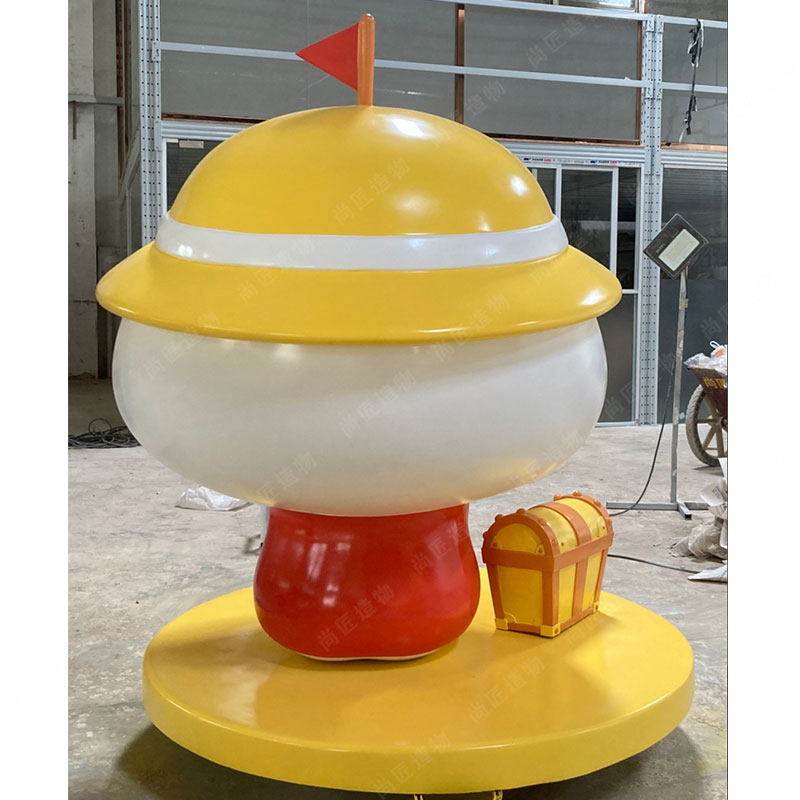
Conclusion
Outdoor spaces gain character and longevity when designed with materials that balance artistry and resilience. Custom fiberglass sculptures achieve this equilibrium, offering solutions that thrive under challenging weather conditions while maintaining aesthetic appeal. Their lightweight nature simplifies installation and relocation, making them adaptable to evolving landscapes—whether in private gardens, commercial patios, or community areas. Unlike traditional materials prone to corrosion or decay, fiberglass retains structural integrity and vibrant finishes for years, reducing maintenance demands. These installations not only serve as focal points but also reflect the values of sustainability and creativity, merging functional durability with imaginative design. By integrating such pieces, property owners and planners invest in art that withstands seasonal extremes while enriching environments with visual narratives. As discussed, the versatility of fiberglass ensures its relevance across diverse applications, reaffirming its role as a modern medium for enduring outdoor artistry.
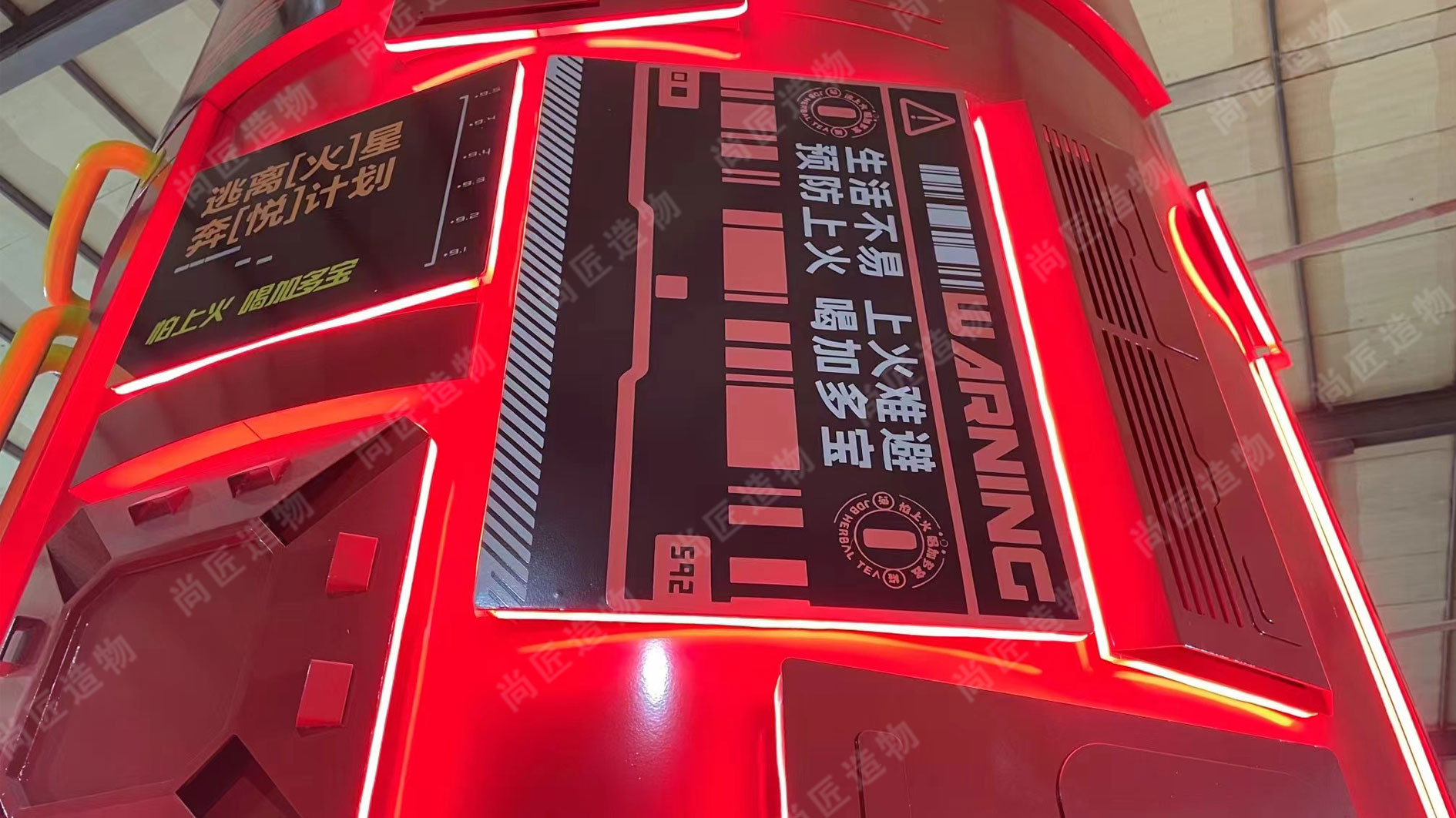
FAQs
What makes fiberglass ideal for outdoor sculptures?
Fiberglass combines strength and flexibility, resisting cracking in temperature fluctuations. Its non-porous surface prevents moisture absorption, minimizing weathering and corrosion over time.
How long do custom fiberglass sculptures last outdoors?
Properly maintained pieces endure 15–25 years, even in harsh climates. UV-resistant coatings and sealants protect against sun damage, while routine cleaning prevents debris buildup.
Can fiberglass sculptures withstand heavy rain or snow?
Yes—fiberglass is impervious to water damage, and its structural integrity remains intact under snow loads. Reinforced bases prevent tipping in high winds or storms.
Are these sculptures customizable for specific themes or sizes?
Artists mold fiberglass into any shape, from abstract forms to lifelike figures. Scaling options range from tabletop pieces to monumental installations exceeding 20 feet.
Do fiberglass garden sculptures require special installation?
Lightweight designs simplify placement, though anchoring is recommended for tall or freestanding works. Concrete footings or ground stakes provide stability without complex groundwork.
How does fiberglass compare to bronze or stone for outdoor art?
Unlike heavier materials, fiberglass reduces shipping and installation costs while offering comparable durability. It also allows for finer detail replication than most natural stone.
 ch
ch English
English

